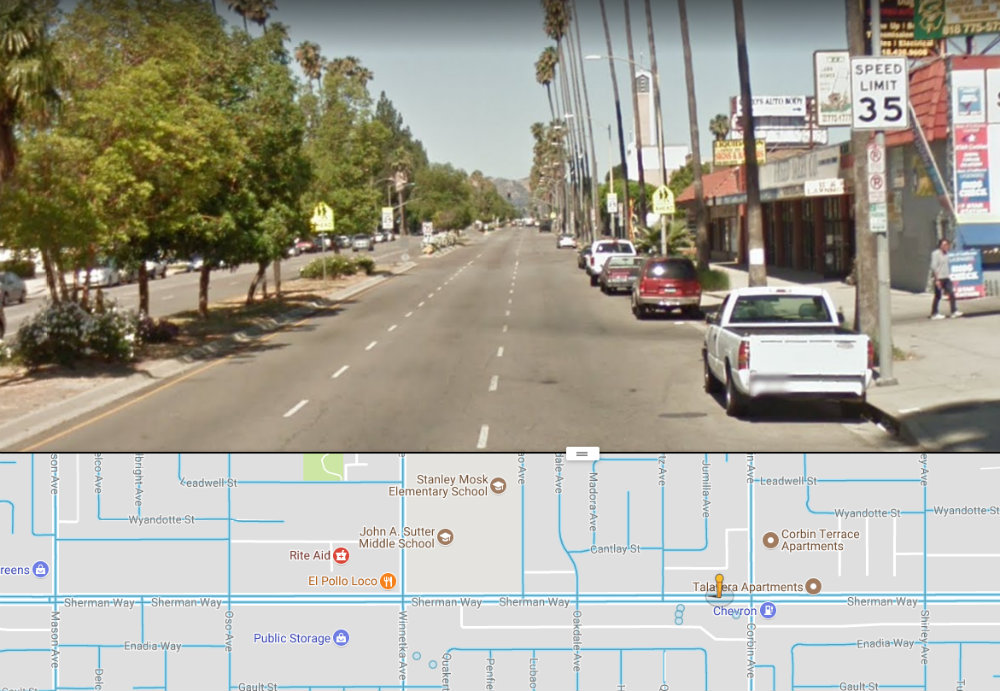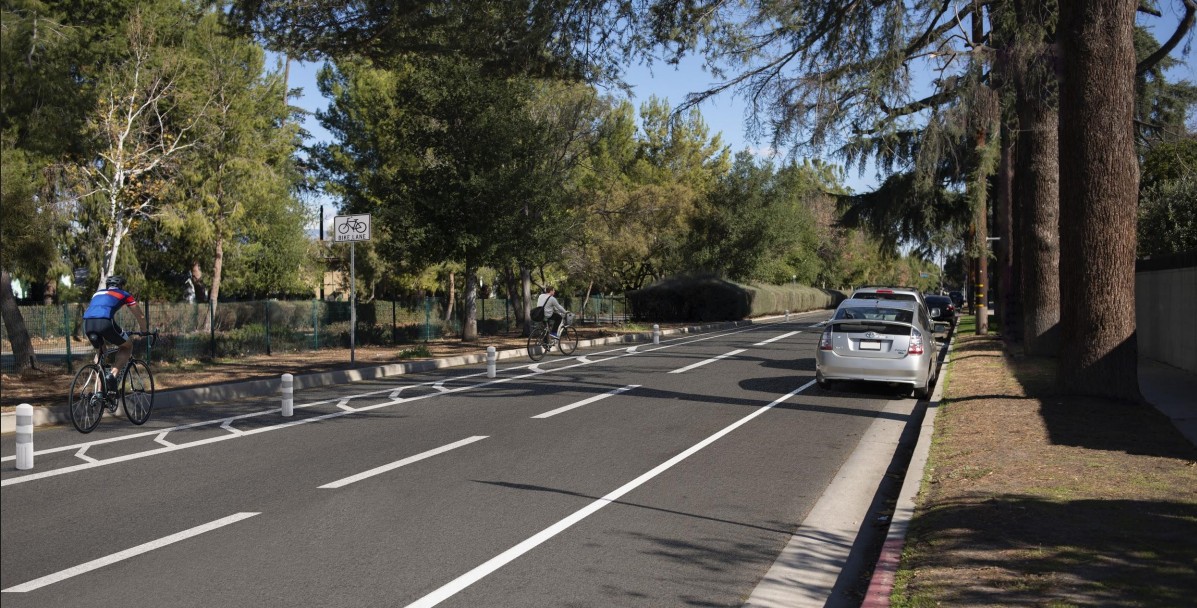I've been seeing a lot of headlines lately regarding the spike in pedestrian deaths and the city of L.A. Vision Zero program initiated by Mayor Eric Garcetti in 2015. Some of the headlines seem to conflate the spike with the initiative itself, as though the spike is happening because of Vision Zero.
Elsewhere, Vision Zero successes have been achieved through a combination of education, engineering and enforcement. Cities do slow speeds to create a safer, more controlled environment for travelers to navigate - no matter the mode they choose.
In Los Angeles, we’ve barely gotten started. When the opportunity arises for safety projects that calm motor vehicle speeding, there is resistance from not only the public, but from some rank and file within city agencies. LADOT continues to campaign alongside the LAPD to raise speed limits despite all the evidence that shows speed is the biggest contributing factor with regards to death and injury in collisions. The reason of course is the 85th percentile rule in state law. But why do we raise limits? Why are we not lowering design speed? Because culturally as Angelenos, speed feels normal, even if all we are doing is speeding from red light to red light.
Case in point, recently, while browsing Instagram, I spotted an @LAPDHQ post showing a motorcycle officer’s on-board video. The video shows a near miss where a driver pulls out in front of the motorcycle. It was a close call. Thankfully there was no collision and everyone lived for another day.
The curious issue for me was the narrative being pushed by the LAPD which places blame 100 percent on the driver. Yes, the driver seems to just pull out without looking carefully. Yes, drivers need to make sure the right of way is clear. Yes, this driver made a mistake - but look again.
That motorcycle officer is going fast. What I see is a dangerously designed corridor with few controls in place to make speeding feel uncomfortable. In the video there appear to be minimal efforts to slow drivers down: a couple posted signs warning of a school zone and unmarked crosswalk ahead but nothing particularly discouraging speeding. In fact this road has a very high design speed and fast-moving traffic feels normal.
It reminded me of a truly phenomenal New Zealand safe streets campaign with almost the exact same scenario playing out, fictionally, of another vehicle misjudging a gap in traffic.
With this campaign and the design speed of the street in mind I pushed back on the post. Most commenters denied my assertion that the motorcycle was above the limit.
I decided to calculate exactly how fast the motorcycle was travelling. Since the video had a time stamp all I needed to do was find the location and calculate distance to get the speed. I know Los Angeles well from driving everywhere and riding thousands of miles of it by bicycle. I recognized the stretch on Sherman Way in the clip, in the West Valley, beginning near the intersection of Oakdale Avenue - with the incident occurring at the corner of John Sutter Middle School.
My estimate based on markings on the street is that the motorcycle travels 220 feet in 3 seconds which equates to a little over 50mph heading right up to the point where the motorcycle hard brakes and the near miss occurs. If there had been a collision here, I’m fairly confident that an insurance company would argue that the motorcycle was not travelling at a safe speed especially for what appears to be rainy conditions. Not only would a collision at this speed have been tragic, it could have been costly for the city.
Now, my purpose in writing this piece is not to blame the individual officer or even the driver of the SUV, though I believe both share some responsibility here, particularly the driver of the SUV. We are all human. We all make mistakes. We all operate within the system that exists.
The ultimate blame, in my opinion, is with the engineering of roads that reinforce the culture of speed.
Everything about Sherman Way dares you to drive fast: wide lanes, big straight away, long stretches between traffic lights. From an engineering standpoint, the motorcycle officer did exactly as the street beckoned them to do. From the SUVs point of view it is quite difficult to traverse this six-lane road, with no signal, even under the best of circumstances.
In the video you can see that the SUV is not driving recklessly or rapidly, the driver seems to have simply misjudged the gap in oncoming traffic. Indeed, the speed limit posted about a block prior is 35mph. Yet the punishment for the errors in judgment like this can be death. Why does our city government set us up for failures like this?
I don’t want to imagine a young student trying to cross on foot here.
Moving forward, I respectfully urge that the city leadership, LAPD, and LADOT join wholeheartedly in the fight to change our traffic culture by seeing a different narrative.
Imagine the impact of the New Zealand PSA here in L.A.: “Slow down, other people make mistakes.” The power in this slogan is that it puts the onus on everyone to be mindful, without blaming any party directly.
Rather than raise speed limits, let’s lower design speeds, so the mistakes are less impactful when they inevitably happen. That change of stance from our city leaders, law enforcement, and the public at large could bring us one giant cultural step closer to achieving the goals of Vision Zero.
Addendum March 8, 2017: LADOT Vision Zero Deputy of External Affairs Lilly O’Brien-Kovari responded to state that just because LADOT is compliant with state law does not mean LADOT endorses the methodology. O'Brien-Kovari requested that Streetsblog L.A. relay the following:
LADOT has been working with State Assemblymember Laura Friedman who introduced A.B. 2363 in February to pursue changes to the 85th percentile methodology. LADOT is working with Friedman's office on the bill text to allow for greater flexibility at the local level, which will help to prevent increasing speeds. The L.A. City Council adopted a resolution to support legislative changes to the 85th Percentile methodology.
For more information on Friedman's A.B. 2363, see Streetsblog CA coverage.







